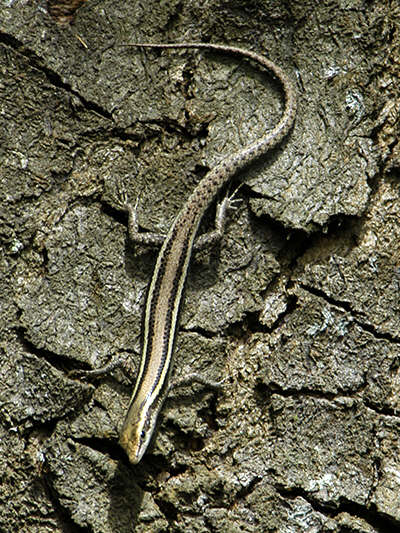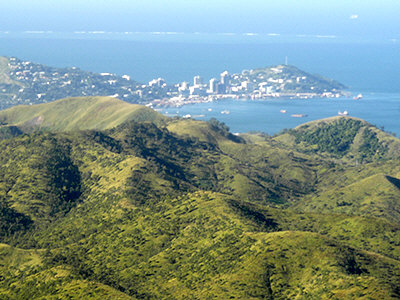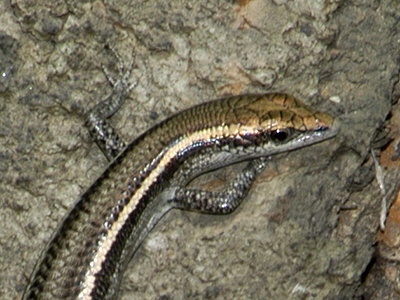
Fig 1

Fig 2

Fig 3
|
Family : SCINCIDAE
Species : Cryptoblepharus yulensis
Size (snout to vent) : 4.4 cm
Size (total length) : 5.0 cm
Cryptoblepharus
yulensis, or Southern Snake-eyed Skink, is a small skink with a somewhat disjunct distribution. It is known to occur around Papua
New Guinea's capital, Port Moresby, as well as Yule Island lying 100
kilometres to the northwest. It also occurs in one area of
Western Province.
The name 'snake-eyed skink' derives from its lack of eyelids, but instead it possesses ocular
scales (brilles) which protect the eye,
rather like a snake.
The body and limbs are slender, and the head and eyes are small.
The top of the head is copper-brown, and the dorsal surface is pale brown.
The upper part of each flank possesses a thick, cream coloured stripe, and
the flanks are dark.
It occurs in open, lowland woodland, including sparse fire-climax eucalypt
forest created by manmade disturbance.
The specimen shown here was
found amongst the hillside gardens of a building on the outskirts of Port
Moresby.
Fig 1 : Specimen active in the noonday sun, low on a tree trunk.
Fig 2 : Typical open savannah and fire-climax woodland surrounding Port
Moresby, Papua New Guinea's capital.
Fig 3 : Close-up of the head and forelimbs. |